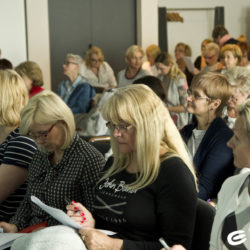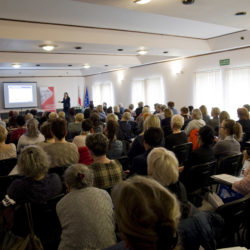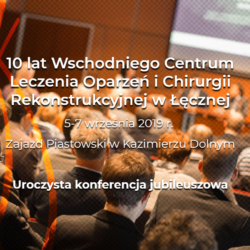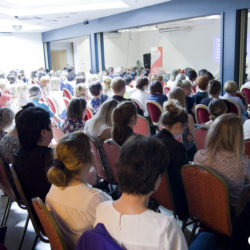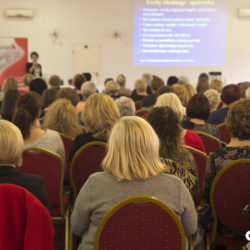The use of a reverse sural flap in covering tissue loss of the distal 1/3 lower extremity, heel and the dorsum of the foot as an alternative to free flaps
Piotr J. Gawlik1 | Damian Puźniak1 | Magdalena Bugaj1 | Ilya Dzierzyński1 | Aleksander Zhukavets2 | Ryszard Mądry1 | Andrzej Trebukhouski3 | Edward Grynkiewicz2 | Joanna Piszczek1 | Jerzy Strużyna1
1 Wschodnie Centrum Leczenia Oparzeń i Chirurgii Rekonstrukcyjnej Samodzielnego Publicznego Zakładu Opieki Zdrowotnej w Łęcznej
2 Belarusian Medical Academy of Post-Graduate Education, Minsk, Republic of Belarus
3 Klinika Anestezjologii i Intensywnej Terapii Instytutu „Pomnik – Centrum Zdrowia Dziecka” w Warszawie
⇒ Piotr J. Gawlik, Wschodnie Centrum Leczenia Oparzeń i Chirurgii Rekonstrukcyjnej, Samodzielny Publiczny Zakład Opieki Zdrowotnej w Łęcznej, ul. Krasnystawska 52, 21-010 Łęczna
Wpłynęło: 20.02.2017
Zaakceptowano: 15.03.2017
DOI: dx.doi.org/10.15374/ChPiO2017005
Chirurgia Plastyczna i Oparzenia 2017;5(1):1–6
Streszczenie: Dzięki rozwojowi opieki anestezjologicznej oraz techniki mikrochirurgicznej, wolne płaty stały się metodą z wyboru w celu zaopatrywania ubytków tkankowych podudzi. Technika ta posiada niestety ograniczenia wynikające z upośledzenia funkcji miejsca dawczego i/lub biorczego ze względu na np. zmiany naczyniowe w wyniku zaawansowanej miażdżycy, cukrzycy, czy popromiennego uszkodzenia tkanek. Ponadto stan ogólny pacjenta nie zawsze pozwala na wydłużony czas operacji i może niepotrzebnie podwyższać ryzyko powikłań pooperacyjnych. Zmiany pourazowe często wiążą się z uszkodzeniem dużych naczyń krwionośnych kończyny dolnej. W takich przypadkach zastosowanie technik mikrochirurgicznych wiąże się z większą częstością powikłań. Wykorzystanie miejscowych tkanek lub techniki płatów przesuniętych w dolnej części podudzia i stopy jest bardzo ograniczone ze względu na skąpy obszar tkanki miękkiej i jej niską mobilność. We wszystkich tych przypadkach użycie skórno-powięziowych płatów lokalnych stanowi dobrą alternatywę dla płatów wolnych. Celem niniejszej pracy była ocena wykorzystania odwróconego płata łydkowego do pokrycia ubytków skory i tkanki podskórnej okolicy 1/3 dalszej podudzia, kostki i pięty.
Słowa kluczowe: odwrócony płat łydkowy, płat łydkowy, rekonstrukcja 1/3 dalszej kończyny dolnej, rekonstrukcja kończyny dolnej
Abstract: As a result of the development of microsurgery techniques and anesthesiological care, free flaps are the most common method of choice for covering extensive tissue loss of the area of the shank. However, this technique has its limitations that are caused by impaired function of the donor site due to e.g. vascular changes, advanced arteriosclerosis, diabetes or damage caused by radiation. Prolonging the duration of the surgical procedure is not always possible due to the patient’s general condition and could result in an unnecessary increase in the risk of postoperative complications. Posttraumatic lesions may lead to damage of the large blood vessels of the lower extremity and the use of microsurgery techniques in such cases is associated with a greater risk of complications. The use of local tissue or advancement flap techniques in the lower part of the shank and foot is extremely limited because of soft tissue deficiency and its low mobility. In such cases, the use of fasciocutaneous local flaps is a suitable alternative to free flaps. The aim of this study was to evaluate the use of a reverse sural flap in treating cutaneous and subcutaneous tissue loss in the distal 1/3 area of the shank, ankle and heel.
Key words: lower extremity reconstruction, reconstruction 1/3 distal lower extremity, reverse sural flap, sural flap

